Before I moved to Fort Worth I lived in San Diego, California, where I gradually got into gardening. I’m the kind of gardener that believes gardening is actually a form of meditation that can lead to enlightenment even if you don’t believe in enlightenment or have any idea what that means. Where most weekend gardeners would just take electric pruners to quickly cut back a hedge, I would be out there with my beloved hand pruners, carefully but quickly choosing each snip of a podocarpus gracillior hedge until my wife called me in because it was getting dark.
Now that I’m in Fort Worth I have to learn the trees and shrubs that will work here. I believe Fort Worth is in USDA Hardiness Zone 8a. One thing I’ve noticed about the residential landscaping norms here is that the majority of homeowners have a flat grass lawn with maybe a tree or two, and then some shrubs or small trees close to the house. And often they plant trees way too close to the house – maybe a previous owner intended to keep them trimmed as shrubs.
Coming from San Diego, I have a drought mindset. Much of southern California goes several months at a time without a drop of rain. Many homeowners there give up on the traditional lawn because the climate there is nearly desert and the cost of water keeps going up.
That mindset is not incompatible with North Texas. While not as dry as San Diego it seems we’re also prone to long dry stretches, to the extent that it’s nearly impossible here to have a traditional grass lawn without installing some kind of irrigation system. The crazy heat we get every summer requires grass be watered regularly. I’m originally from the suburbs of Pittsburgh where lawns reign supreme, but Pittsburgh gets so much rain that very few people worry about installing sprinklers – it’s not necessary. Here, it’s a requirement of a green lawn. Other requirements include weed killer, twice weekly cutting during part of the year, weed whacking, and aeration. My house here came with a boring lawn and irrigation system; I soon started planning on getting rid of the former and adapting the latter to a drip system that will use a fraction of the water. I don’t mind planting and pruning, but I’m not going to be out there with a lawnmower and weed wacker. I have a push (reel) mower so at least I’m not guilty of polluting the environment with smog and noise, but this a brainless chore that just wastes my time. I’m getting rid of my lawn in favor of beautiful trees, shrubs, and hardscape. I had to learn about the local plants – there is little overlap between trees that work here vs. San Diego. When I started looking into it, I quickly fell in love with all the varieties of holly that thrive here in Zone 8. I planted 23 Dwarf Burford Hollies (Ilex Cornuta ‘nana’) to form a hedge. The previous owner already had already planted a few Dwarf Yaupon Hollies (Ilex vomitoria ‘nana’)
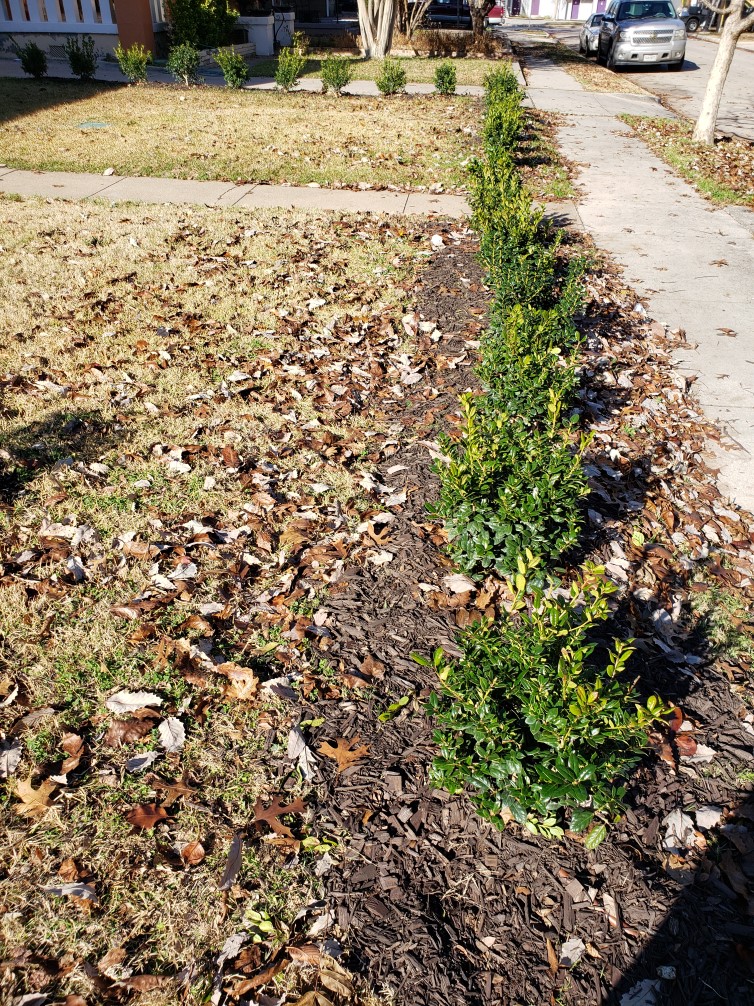
It’s rare to see a hedge like this in Fairmount. I don’t want to wall myself off from the neighborhood, and I don’t want a fence, but I want some kind of vertical separation between my property and the outside world.
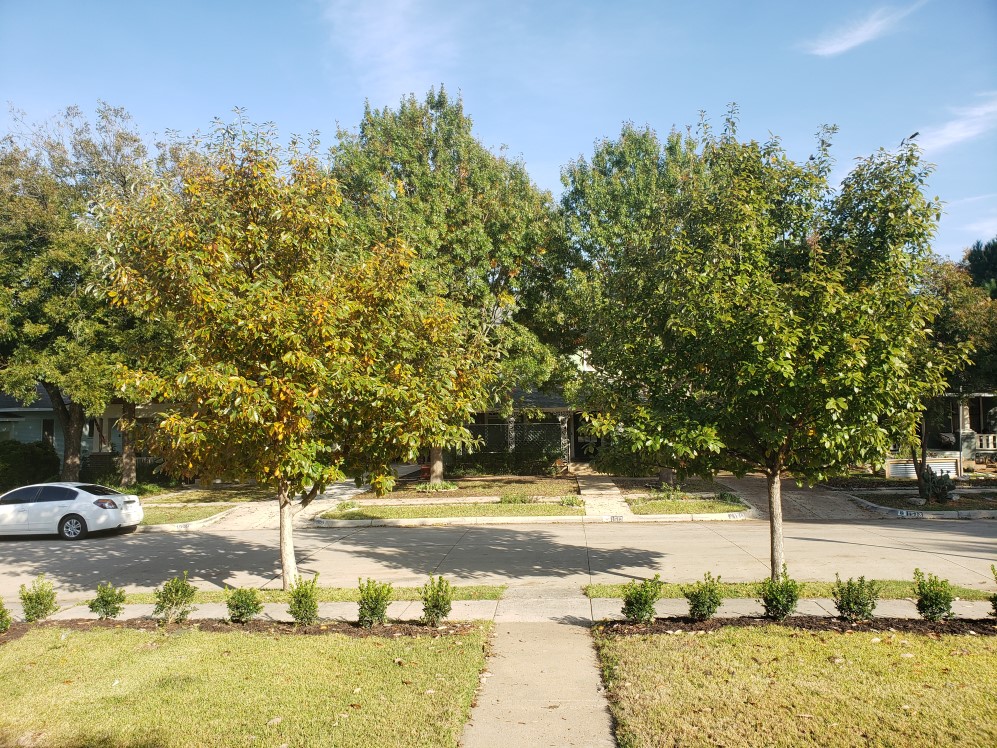
I planted each of these with some compost mixed into the soil.
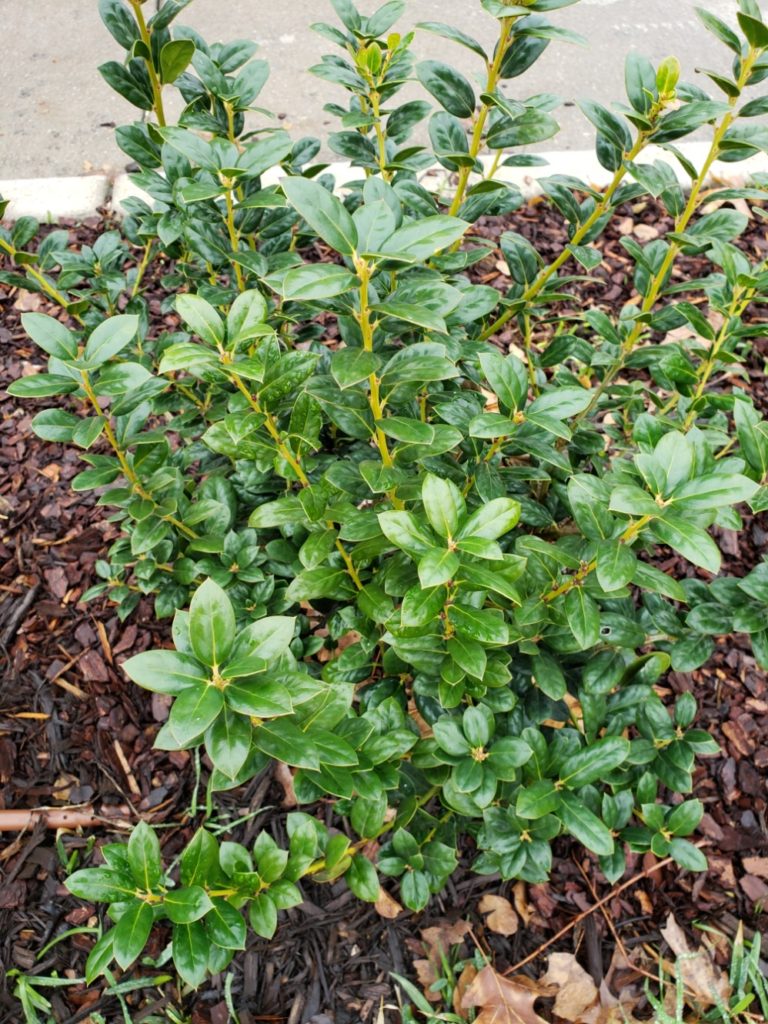
The goal is to completely get rid of the grass. With the hedge in place, I put in two ilex vomitoria ‘Pride of Houston’, also known as yaupon hollies.

I love the latin name, which refers to the fact that Native Americans believed the plant would induce vomiting, which they wanted as part of their purification rituals. It does not induce vomiting however, and in fact the leaves can be dried and used to make a tea that contains caffeine. I haven’t tried yaupon tea yet; I’m not even sure where I can get some in Fort Worth but I’ll find it – or I’ll make some myself. Most likely both.
Another plant that caught my eye here is the Nelly R. Stevens Holly. We want a little more privacy in the backyard so I planted eight of these beauties, which can grow quite high, about six feet apart along a fence.
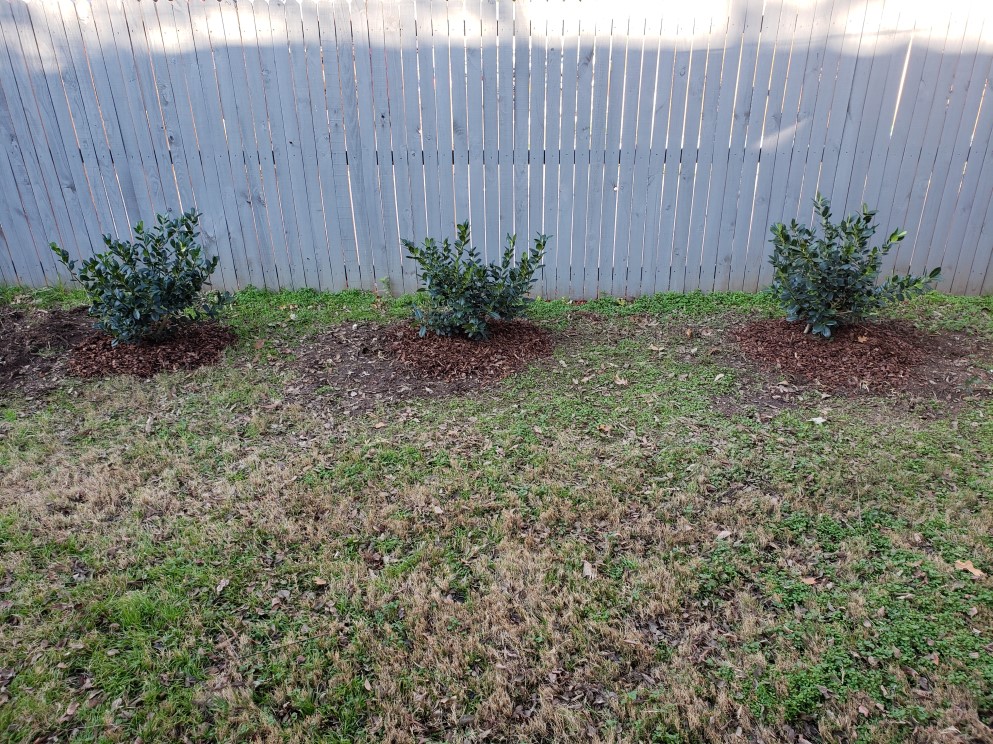
Hopefully they’ll grow into a large hedge. And here is a closeup of one Nellie R.:
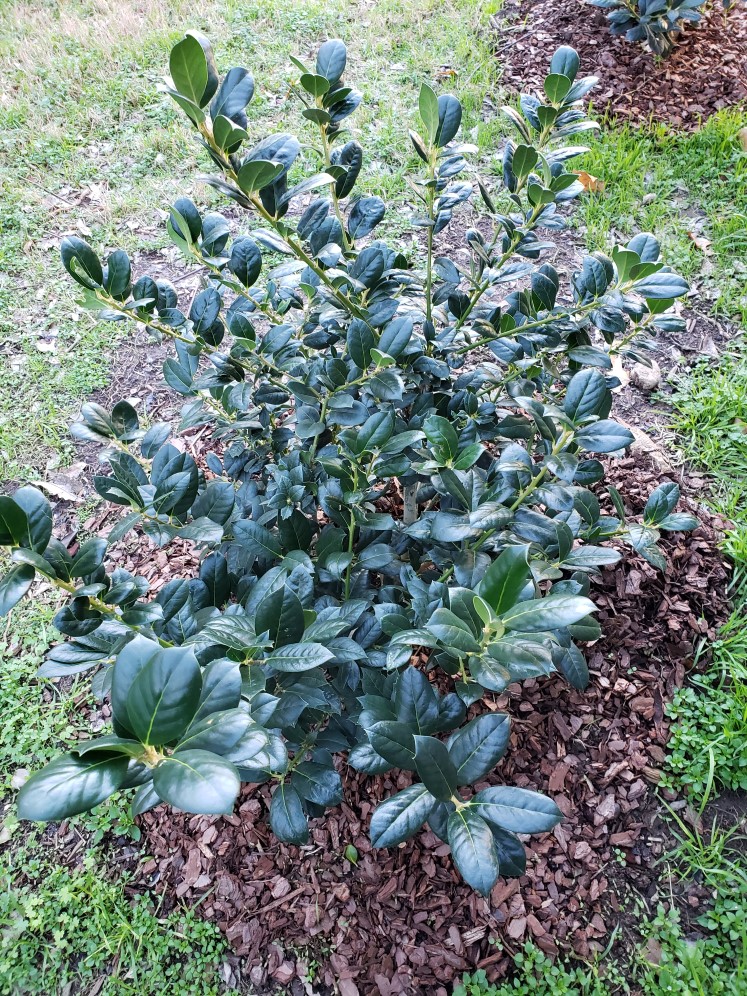
To finish off the hollies I decided to plant two Ilex Decidua ‘possumhaw’ hollies diagonally from my yaupons. Here is one of them I just planted in January of 2020. Note one of the yaupons in the background. I had the mirror image of this on the other side of the front yard:
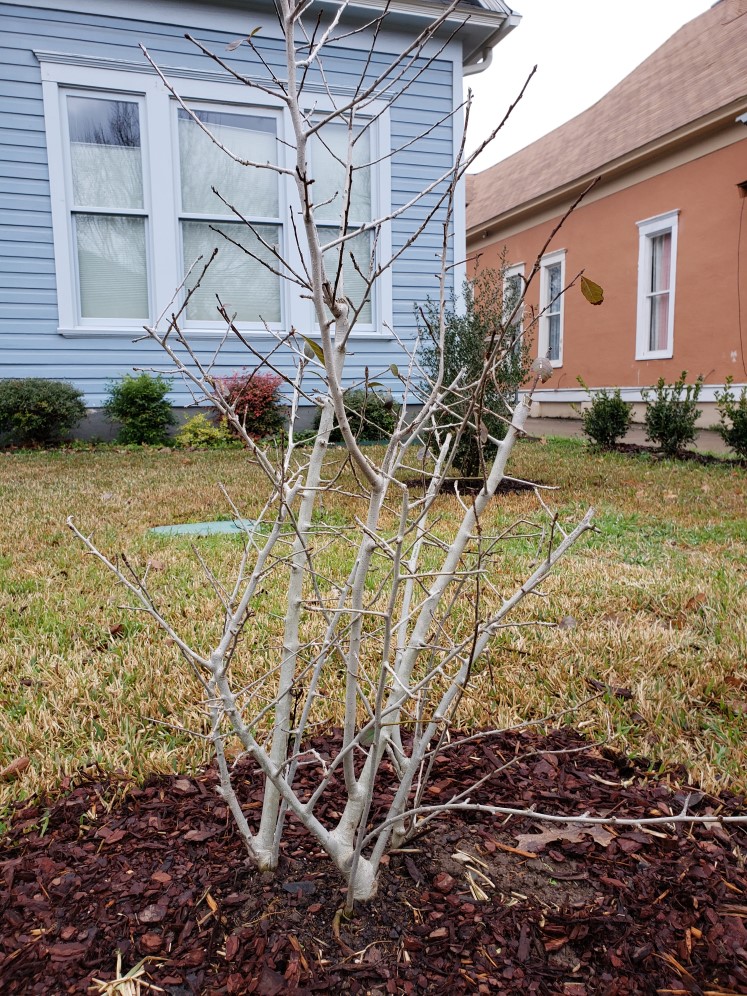
When I first read about the possumhaw I wasn’t interested. I thought, with all these evergreen hollies, many with beautiful shiny dark green leaves, why would someone plant a deciduous one? Well, my wife and I found out why the first time we stumbled upon one in the neighborhood. The possumhaw above doesn’t have berries because it’s a baby, but established ones get loads of bright berries on the trunk after the leaves go away, and then the birds eat them. Hopefully I’ll post pictures of these next winter. They really look amazing, and I think we need some deciduous plants among all the evergreens.
I thought I was done planting but my Holly Experiment took an unexpected turn with a visit to the Fort Worth Botanic Garden. I had been there several times and admired their varieties of hollies. But I was confused about three huge hollies they have near a gorgeous tall hedge of Nellie R. Stevens hollies.
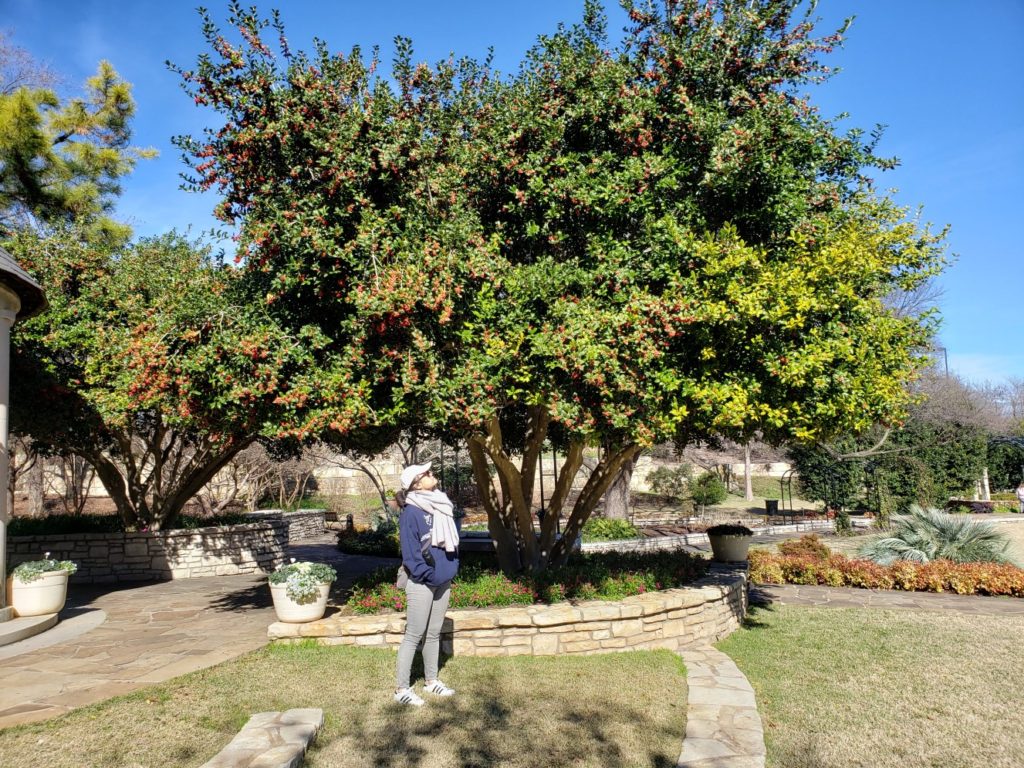
You can see two of them in this picture. In my opinion these are the most gorgeous plants at the Botanic Garden. This was taken in January, and just look at the color of the leaves and the thousands of orange/red berries! But unlike most of the plants in the garden, these three hollies were missing the useful tag that gives the plant’s botanical and common names. Here is a closeup of the leaves and berries:

I finally figured out that these trees are Ilex cornuta ‘Burford’ hollies. Later, in March of 2020, right as the Covid-19 virus was setting in (and before they closed the Botanic Garden) I started volunteering at the Garden and Derek, one of the full-time employees, told me about these beauties, and that the signs marking them as Burfords were missing and just never replaced. They’re near a gorgeous hedge of Nellie R. Stevens hollies that do have the tag. When I finally learned this I knew I had to get one of these in my garden. The problem is that while it’s easy to find plenty of Dwarf Burfords anywhere around town, it’s not so easy to find the Standard Burfords that grow much taller. How tall? The tag on my Burford says it grows to between eight and ten feet, but just look at that picture again. That’s a little taller than ten feet! We’ll see how tall mine will get. Anyway, I had to call around a lot to find this. The Standards are not so common now. I love Archie’s Gardenland, but they don’t have any and they rarely get them. Nor does Mike’s Garden Center in Fort Worth. I found one – one! – at Calloway’s on Hulen and planted it on 3/21/2020:
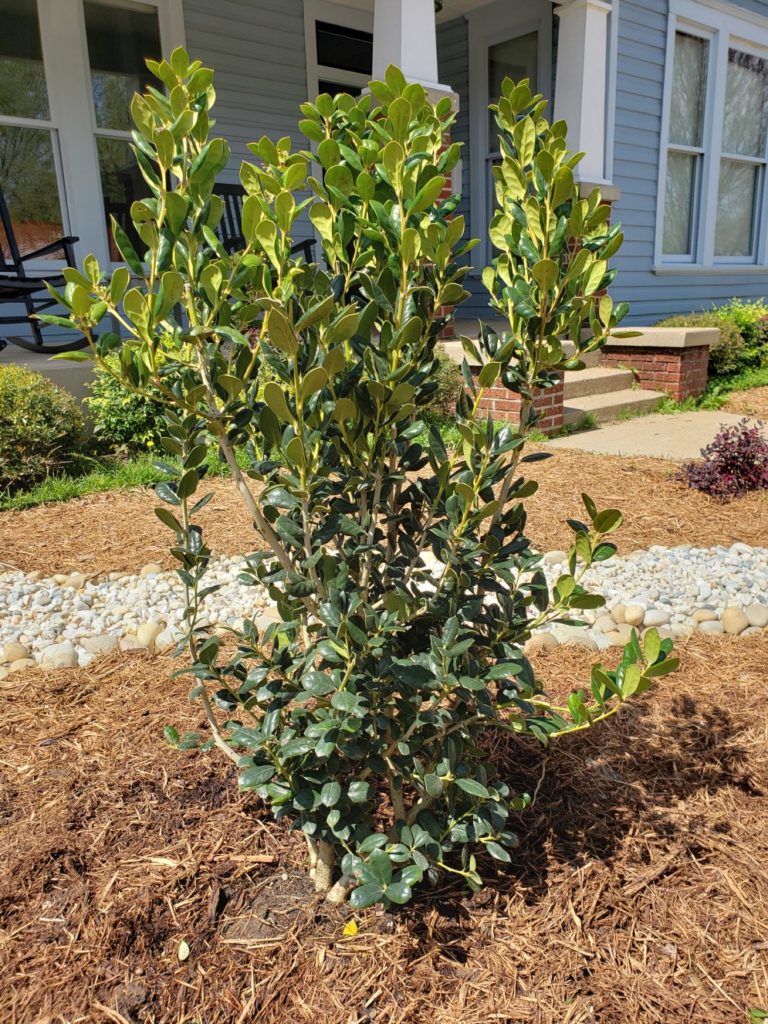
I replaced one of the yaupons with one of these, putting the yaupon in the backyard. All my hollies are now in the ground. Check back for updates on their progress. If it works out as planned I’m going to install a sign reading “Welcome to Hollywood”. Oh, one more thing – notice I had all the grass removed from the property! That’s another story.
Leave a Reply